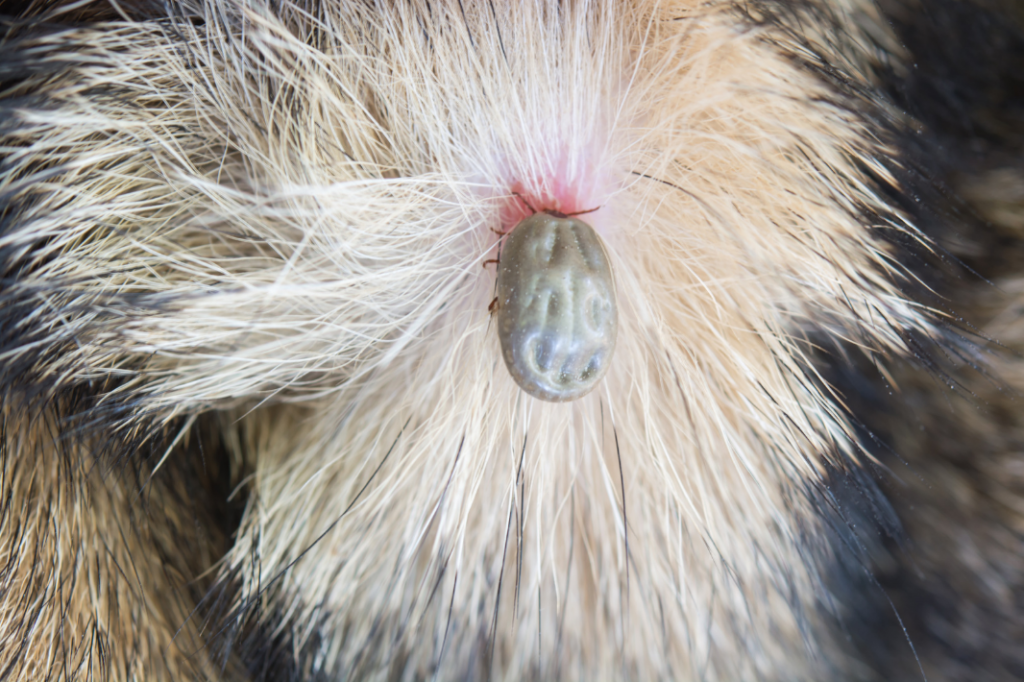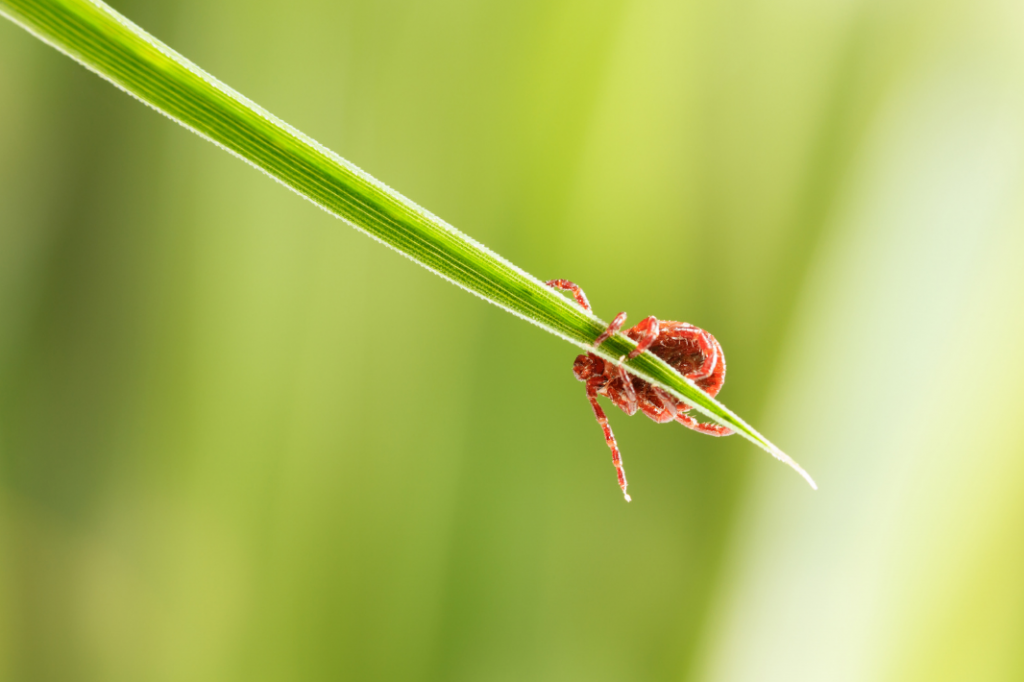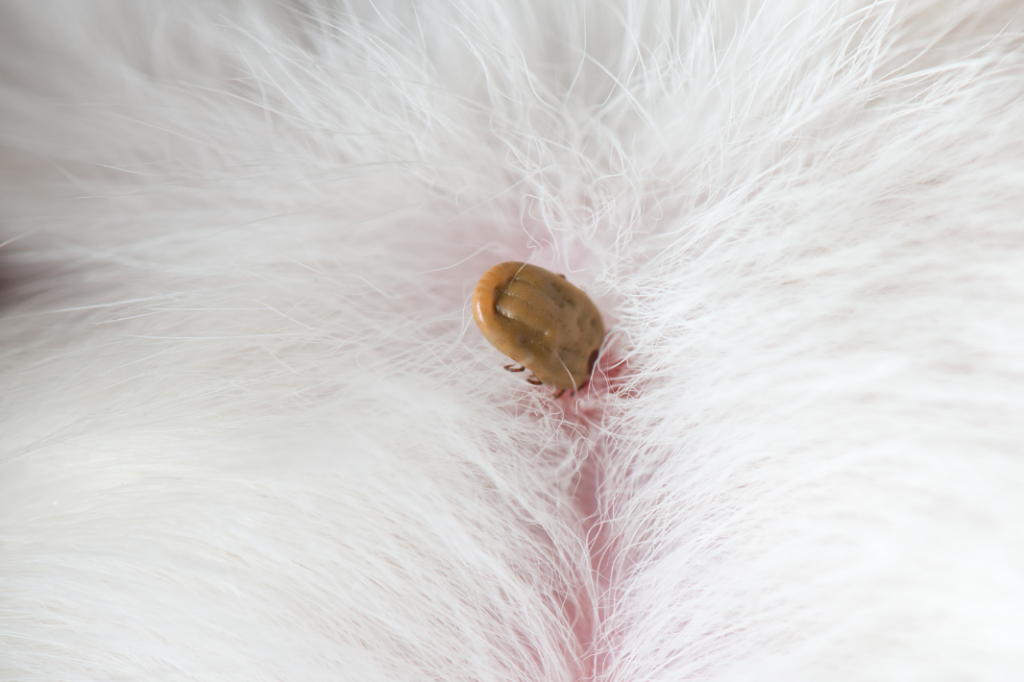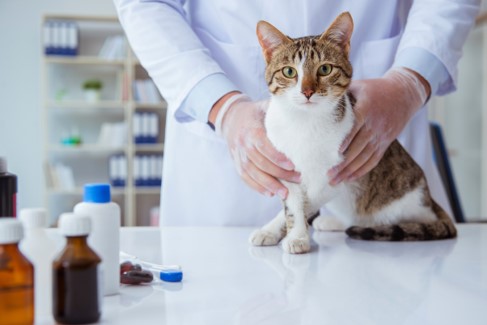Fleas & Ticks
Fleas: how to spot them and how to get rid of them
Fleas are tiny blood sucking hitchhikers that can catch a ride on your dog or cat from absolutely anywhere – the park, the woods, your garden… Once they’ve secured a ride back to your home, they not only munch on your pet, but get comfy in your furnishings and turn it into the perfect breeding ground.
Before you know it, you can see them bouncing on your pet, making them scratch, lick and bite excessively.
What to look out for:

Itchy scratchy behaviour from your pet – lots of licking, biting, scratching

Bouncing tiny insects on your pet, furniture or carpets

Small black dot-like insects hiding within your pet’s fur
What harm can they do?
Apart from being exceptionally irritating for your pet, in extreme cases, infection can occur from excessive scratching, biting and licking which can make the skin sore and exposed. Fleas can also cause Flea Allergy Dermatitis (FAD), a hypersensitive reaction to flea bites which requires veterinary attention. Not to mention making you itch and feel uncomfortable in your home too.
How to get rid of them?
Using a flea comb is a safe, non-toxic and inexpensive way to physically remove fleas from your pet. The fine teeth of our flea combs trap flea eggs attached to your pet’s fur, preventing them from hatching and continuing the flea life cycle. Fleas themselves are small dot-like black insects, while their eggs are tiny white/cream ovals that look like mini grains of rice.
Top Tips:
- The best time to use your flea comb is right after your pet has had a bath, but you can also groom without bathing too (cats often prefer this).
- Towel dry to remove most of the moisture from their coat, then work in sections, running the flea comb through their coat in the direction of the fur.
- Dunk your comb in water every few strokes to remove any fleas or eggs that have been trapped or wipe on a piece of kitchen roll.
- Pay particular attention to your pet’s nooks and crannies – behind the ears, armpits, groin, base of the tail and around their collar. Fleas like to hide in these safe and protected areas.

But what about the rest of your house?
Once your pet is flea free, you still need to treat your house. Thoroughly vacuum your floors and soft furnishings to remove any flea eggs, larvae and pupae. Wash your pet’s bedding and any removable covers where your pet lies – like your sofa.
It’s advisable to use a vet recommended flea treatment alongside combing to keep your home and pet flea free.
Ticks: How to spot them and how to remove them.

All about Ticks
Apart from being exceptionally irritating for your pet, in extreme cases, infection can occur from excessive scratching, biting and licking which can make the skin sore and exposed. Fleas can also cause Flea Allergy Dermatitis (FAD), a hypersensitive reaction to flea bites which requires veterinary attention.
Not to mention making you itch and feel uncomfortable in your home too.
Tick Fact file:

How to spot them
Ticks are arachnids, so look like tiny spiders. Their bodies grow and darken as they consume blood, starting at 1mm and growing up to 1cm.

Where to find them
Ticks live in long grass, woodland and busy undergrowth where they wait with their first pair of legs outstretched ready to catch onto a host as it brushes by their hiding place.

Feeding Habits
Your pet! Some attach quickly and some move about looking for an ideal spot where the skin is thinner and easier for them to feed from. Then the feeding begins and lasts for around 7 days, sometimes more.
How do I know if my pet has a tick?
Ticks are usually found by touch rather than sight, so regularly check over your pet when you are grooming or handling them. Pay particular attention to the nooks and crannies that ticks like to hide in:
- Under the collar
- Behind ears
- Armpits
- Groin area
- Between toes
- Under their tail
How do I remove a tick safely?
Ticks have super strength jaws and attach very tightly to your pet. It is important to remove them whole using our tick picker:
- Position the picker over the tick with the tick in the largest section of the picker, nearest the handle (fig.1).
- Lift the handle so that the narrow nose of the picker is flat on the skin.
- Draw the picker slowly and firmly towards the tick so that it is gripped securely and can be carefully lifted away from the skin and disposed of.
- Spray area where the tick was attached with pet friendly disinfectant.
Check your pets daily for ticks, as their immediate removal reduces the chance of transmitting disease.
Top Tip: Remember to use smooth movement when lifting the tick, this will help ensure that there are no traces of tick’s head or mouth–parts left on or in the skin.

What disease can ticks cause?
Most tick bites are painless with minimal swelling, redness or soreness to the bite area. Once they are removed, often heal quickly. However, some ticks carry bacteria which can cause Lymes disease which is a potentially deadly bacterial infection that affects the nerves and muscles in both pets and humans. Symptoms of Lymes disease in your pet include loss of appetite, lethargy, limping or joint stiffness, fever and difficulty breathing. Always contact your vet if you spot any of these symptoms or think your pet’s tick bite could be infected.
